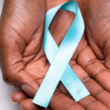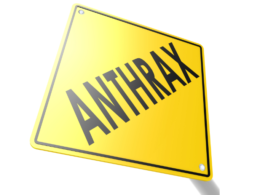Yellow fever is a viral hemorrhagic disease that has plagued humans for centuries, with its roots traced back to Africa some 3,000 years ago. The disease, transmitted primarily by Aedes aegypti mosquitoes, remains a significant public health concern in many parts of the world, particularly in Africa and South America. Although a highly effective vaccine has existed for over 80 years, recent outbreaks have highlighted persistent challenges, including vaccine hesitancy driven by mistrust and misconceptions. This article explores the history, transmission, current research, and societal implications of yellow fever and its vaccine.
Background and History
Origins and Spread
Yellow fever likely originated in Africa, where it was transmitted from non-human primates to humans via mosquitoes. The disease spread to the Americas and other parts of the world through the transatlantic slave trade and increased global trade and travel. By the 17th and 18th centuries, yellow fever was a formidable epidemic threat in port cities across the Americas, causing significant mortality and economic disruption.
Symptoms and Progression
Yellow fever is characterized by its two-phase clinical progression:
- Acute Phase: Symptoms appear 3-6 days after infection and include fever, chills, headache, back pain, loss of appetite, nausea, and vomiting. Most patients recover within a week.
- Toxic Phase: About 15% of those initially infected progress to this stage, which can be life-threatening. Symptoms include high fever, jaundice (hence the name “yellow” fever), bleeding, and organ failure. The toxic phase can result in death for 20-50% of patients without medical intervention.
Geographic Distribution
Yellow fever is endemic to 34 African and 13 South American countries. Although Asia has the potential for outbreaks due to the presence of suitable mosquito vectors, no yellow fever cases have been recorded there. The disease’s distribution and periodic outbreaks underscore the importance of vaccination, especially in endemic regions.
Misconceptions and Myths
Despite advances in medical science, several misconceptions about yellow fever persist, influencing public perception and response:
Myth #1: Yellow Fever is Only Transmitted by Mosquitoes
While mosquitoes are the primary vectors, yellow fever can also be transmitted through contact with infected blood or bodily fluids, albeit rarely. This transmission mode is less common but underscores the need for caution when handling cases.
Myth #2: Yellow Fever is Exclusively an African Problem
Although Africa bears the highest burden, yellow fever is also present in South America. Travelers to affected regions should be aware of the risk and take appropriate preventive measures.
Myth #3: Yellow Fever is No Longer a Serious Threat
Advancements in vaccine development and public health interventions have reduced yellow fever incidence, but the disease remains severe. Those who enter the toxic phase face a high risk of complications and death, making vaccination and public awareness crucial.
The Yellow Fever Vaccine: Efficacy and Challenges
Vaccine Development and Efficacy
The live attenuated yellow fever vaccine, developed over 80 years ago, has proven highly effective. A single dose can elicit a robust immune response, with 94% of recipients showing neutralizing antibodies three months post-vaccination. For most individuals, this immunity is long-lasting, eliminating the need for booster doses in non-endemic regions.
Recent Research and Findings
A meta-analysis published in The Lancet Global Health evaluated the long-term immunity conferred by a single dose of the yellow fever vaccine. The study included cross-sectional and cohort studies from endemic and non-endemic regions, focusing on seroprotection rates and antibody titers.
Key Findings:
- High Long-Term Immunity: In non-endemic regions, 94% of individuals retained protective antibody levels 10 to 60 years post-vaccination.
- Reduced Protection in Endemic Regions: In endemic areas like Brazil, seroprotection rates dropped to 76%, suggesting potential waning immunity over time.
- Vulnerable Populations: Children under two and individuals with HIV exhibited lower immunity, indicating a need for booster doses.
Knowledge Gaps and Challenges
The study highlighted a lack of high-quality research from sub-Saharan Africa and other endemic regions, complicating efforts to assess the vaccine’s long-term efficacy in these areas. Furthermore, logistical challenges, misinformation, and vaccine hesitancy pose significant barriers to vaccination efforts.
Vaccine Hesitancy: Causes and Implications
Root Causes of Hesitancy
- Mistrust in Authorities: Historical grievances and distrust of government and medical authorities fuel skepticism toward vaccination campaigns.
- Cultural Beliefs: Misconceptions, such as attributing yellow fever to witchcraft, hinder public health interventions and vaccine acceptance.
- Perceived Risk: A decline in visible cases may lead some to underestimate the disease’s severity, reducing the perceived need for vaccination.
Impact on Public Health
Vaccine hesitancy can have severe consequences, including:
- Increased Outbreak Risk: Unvaccinated populations are more susceptible to outbreaks, risking regional and global spread.
- Strain on Healthcare Systems: Outbreaks demand significant healthcare resources, which can overwhelm systems, particularly in low-income regions.
Addressing Hesitancy
Efforts to combat vaccine hesitancy must include:
- Community Engagement: Involving local leaders and stakeholders in public health initiatives to build trust and dispel myths.
- Education Campaigns: Providing clear, accurate information about yellow fever and the benefits of vaccination.
- Improved Access: Ensuring vaccines are readily available and accessible, particularly in remote and underserved areas.
Conclusion
Yellow fever remains a significant global health challenge despite advancements in vaccine development and public health infrastructure. Misinformation and vaccine hesitancy, often rooted in mistrust and cultural beliefs, complicate efforts to eradicate the disease. Addressing these issues requires a multifaceted approach, including targeted education campaigns, improved healthcare access, and community engagement. By building trust and ensuring widespread vaccine coverage, we can reduce yellow fever’s impact and protect vulnerable populations worldwide.









